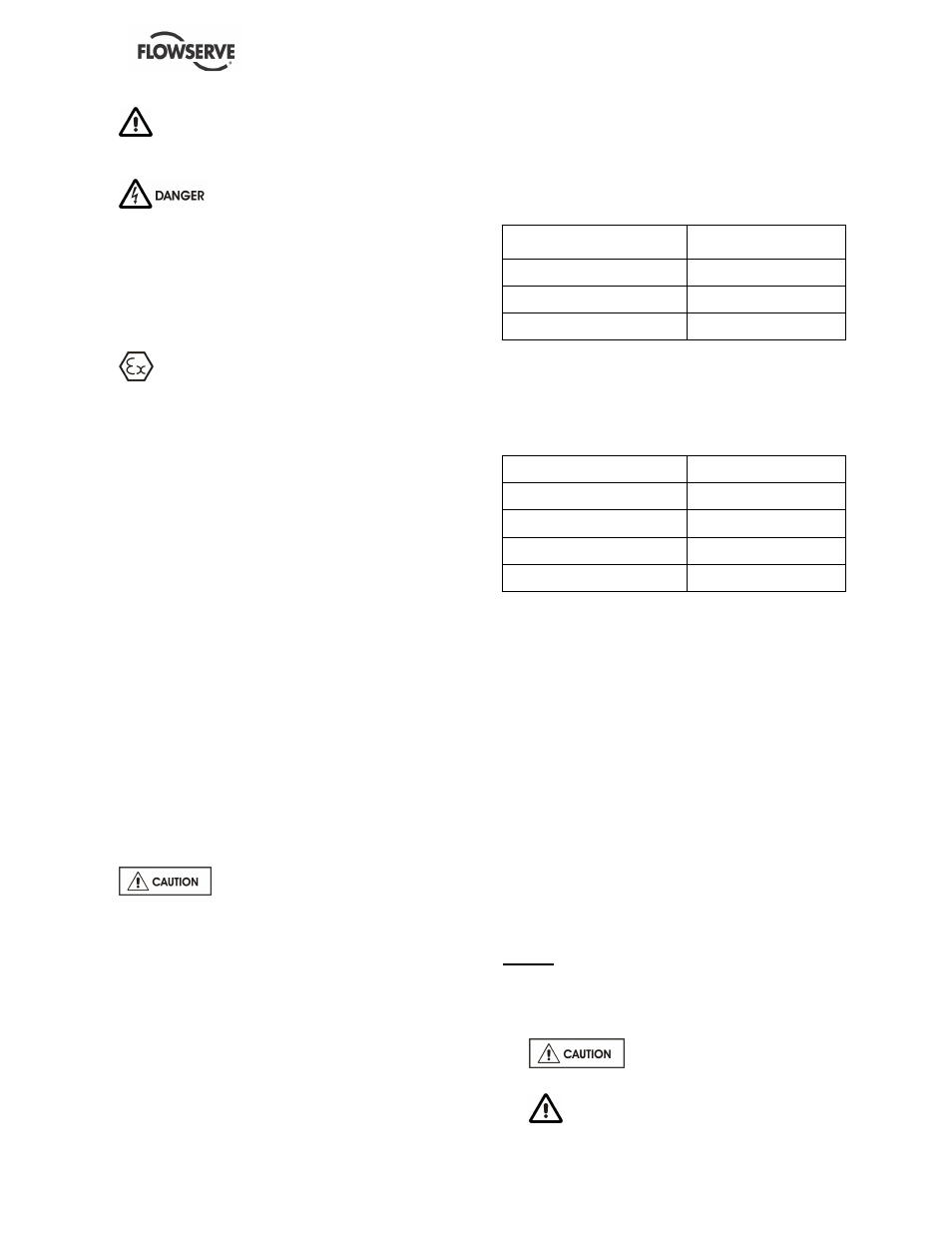6 stopping and shutdown – Flowserve VF User Manual
Page 21

VF USER INSTRUCTIONS ENGLISH 71561233 - 11/09
Page 21 de 32
The adjusting lines, the stuffing box, the lines
under pressure or the mechanical seal cooling
lines must be protected against external knocks.
It is strictly forbidden to open switch
cupboards, switch boxes, or all other live electric
equipment. If it is necessary to open them in order
to take readings, to carry out tests or adjustments
for example, only a skilled technician may do them
with adapted tools. Make sure that physical
protection against electrical risks are used.
5.5.3 Bearings
If the pumps are working in a potentially
explosive atmosphere, temperature or vibration
monitoring at the bearings is recommended. If
bearing temperatures are to be monitored it is
essential that a benchmark temperature is
recorded at the commissioning stage and after the
bearing temperature has stabilized.
•
Record the bearing temperature (t) and the
ambient temperature (ta)
•
Estimate the likely maximum ambient
temperature (tb)
•
Set the alarm at (t+tb-ta+5)
°
C [(t+tb-ta+10)
°
F]
and the trip at 100
°
C (212
°
F) for oil
lubrication and 105
°
C (220
°
F) for grease
lubrication
It is important, particularly with grease lubrication,
to keep a check on bearing temperatures. After
start up the temperature rise should be gradual,
reaching a maximum after approximately 1.5 to 2
hours. This temperature rise should then remain
constant or marginally reduce with time.
5.5.4 Normal vibration levels, alarm and trip
For guidance, pumps generally fall under a
classification for rigid support machines within the
International rotating machinery standards and the
recommended maximum levels below are based
on those standards.
Alarm and trip values for installed
pumps should be based on the actual
measurements (N) taken on site on the bearing
housings of the pump in the fully commissioned as
new condition. The example (N) value is given for
the preferred operating flow region (typically this
may extend to 70 to 120 % of the pump best
efficiency point); outside the preferred flow region
the actual vibration experienced may be multiplied
by up to 2.
These standard values can vary with the rotational
speed and the power absorbed by the pump. For
any special case, do not hesitate to consult us.
Measuring vibration at regular intervals will then
show any deterioration in pump or system
operating conditions.
Vibration Velocity - unfiltered
Vertical Configuration
mm/s (in./s) r.m.s.
Normal N
≤
7.1 (0.28)
Alarm N x 1.25
≤
9.0 (0.35)
Shutdown Trip N x 2.0
≤
14.2 (0.56)
5.5.5 Stop/start frequency
Pump sets are normally suitable for the number of
equally spaced stop/starts per hour shown in the
table below. Check actual capability of the driver
and control/starting system before commissioning.
Motor rating kW (hp)
Maximum stop/starts
per hour
Up to 15 (20)
15
Between 15 (20) and 90 (120)
10
90 (120) to 150 (200)
6
Above 150 (200)
Refer
Where duty and standby pumps are installed it is
recommended that they are run alternately every
week.
5.6 Stopping and shutdown
5.6.1 Stopping and restarting in continuous
running
According to hydraulic conditions of the installation
and its automation degree, stop and restart
procedures can have different forms. Nevertheless
all of them must respect imperatively the following
rules:
Stopping:
a) Avoid that the unit turns in the opposite
direction to the normal running.
b) Avoid a continuous running below the
authorized flow rate (see § 5.4.2).
Restart:
a) Ensure a continuous supply with a sufficient
available NPSH.
b) Ensure a back pressure so that the motor
power is not in excess.
c)
Respect the starting frequency
imposed by the motor manufacturer.
d)
Protect the pump against water hammer
when stopping or starting.
